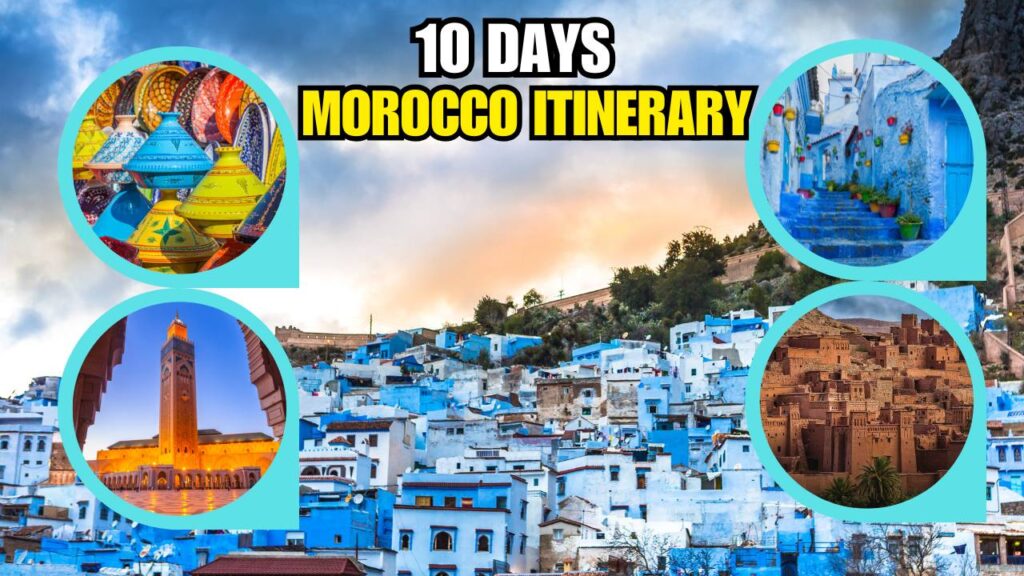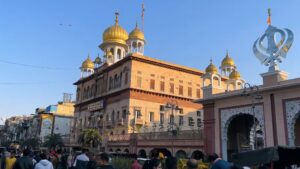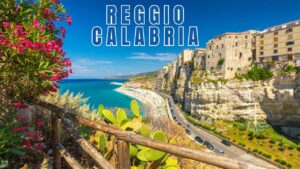Experience Morocco in 10 days with stunning landscapes, rich culture, and thrilling adventures. This Morocco itinerary blends desert, mountains, and historic cities.
On a breathtaking 10-day journey through Morocco with this carefully crafted Morocco itinerary, designed to showcase the country’s most captivating landscapes, rich cultural heritage, and thrilling adventures. From the golden dunes of the Sahara Desert and the majestic peaks of the Atlas Mountains to the vibrant medinas of Marrakesh and Fes, every day brings a new and unforgettable experience. This immersive itinerary blends scenic beauty, historic landmarks, and authentic local encounters, offering a perfect balance for travelers seeking both relaxation and exploration in one of North Africa’s most enchanting destinations.
Best Time to Visit Morocco: A Detailed Guide
Choosing the perfect time to visit Morocco can drastically affect your travel experience. The country’s diverse geography, which includes mountain ranges, desert landscapes, and coastal cities, leads to varying weather conditions. Your trip will be much more enjoyable if you align your plans with the ideal season for your intended activities. The best times of the year to visit, based on your interests, whether looking for a pleasant desert adventure, a coastal retreat, or a cultural exploration.
1. Spring (March to May) – Ideal Time for Most Travelers
Spring is often considered the best season to visit Morocco, and for good reason. Between March and May, the weather is mild, making it perfect for outdoor activities and sightseeing. Average temperatures during these months range from 18°C to 25°C (64°F to 77°F) in many regions, providing an enjoyable balance of warmth without the extreme heat that comes with summer.
Why Spring is Perfect for Visiting Morocco:
- Comfortable Temperatures for Sightseeing: Spring offers a perfect climate for exploring Morocco’s historical cities, such as Marrakesh, Fes, and Rabat. The heat isn’t oppressive, allowing you to comfortably wander through narrow streets, vibrant souks, and ancient monuments like the Hassan II Mosque and the Royal Palace in Rabat.
- Desert Tours: The Sahara Desert is one of Morocco’s top attractions, and spring is an ideal time to visit. The heat is much more manageable than in summer, with daytime temperatures reaching a pleasant 25°C (77°F). Evening temperatures are cooler but not unbearable, making overnight desert stays in traditional tents far more enjoyable.
- Beautiful Landscapes: Spring also brings life to Morocco’s countryside. The fields are lush and green, especially in the Atlas Mountains and the Rif regions, creating picturesque landscapes perfect for hiking or nature walks. If you’re planning to hike Mount Toubkal, the highest peak in North Africa, the spring weather offers a comfortable atmosphere to enjoy the trek.
2. Autumn (September to November) – Another Great Season for Adventure
Autumn in Morocco, which lasts from September to November, is another excellent time to visit. The heat of summer begins to dissipate, and the temperatures become more bearable. Average temperatures range from 20°C to 28°C (68°F to 82°F), making it comfortable to visit the cities and venture into the desert without the sweltering summer heat.
Why Autumn is Ideal for Visiting Morocco:
- Great for Outdoor Activities: Much like spring, autumn is perfect for hiking, trekking, and exploring the Moroccan countryside. The Atlas Mountains, which are ideal for hikers, offer stunning views and cooler temperatures, making autumn a top choice for those seeking active adventures. Mount Toubkal is less crowded during this time, allowing you to enjoy your trek in relative peace.
- Comfortable Desert Adventures: Autumn is a great time to visit the Sahara Desert. The extreme heat of summer has passed, and temperatures during the day are more moderate, while the nights are cool enough to make desert camping a comfortable experience. Camel rides across the dunes are much more pleasant in these milder conditions.
- Cultural and Culinary Experiences: Autumn in Morocco is also when many festivals take place. The Mawazine Festival in Rabat, held in late September, is a celebration of world music that draws international performers and attracts tourists from around the world. This is also a great time to sample the fresh harvest of local fruits, vegetables, and spices, adding a gastronomic element to your Moroccan experience.
3. Summer (June to August) – Heat and Coastal Escapes
Summer in Morocco can be extremely hot, especially in the interior regions and the Sahara Desert. From June to August, temperatures often exceed 40°C (104°F) in the southern and central regions, making it difficult to fully enjoy outdoor activities like hiking or sightseeing. Summer is still a great time to visit if you plan to focus on Morocco’s coastal regions.
Why Summer Might Work for Some Travelers:
- Escape to the Coastline: While the inland regions bake in the heat, the coastal cities such as Essaouira, Agadir, and Casablanca offer a more temperate climate due to the cool breezes from the Atlantic Ocean. The average temperature in these coastal cities is much milder, often ranging from 20°C to 26°C (68°F to 79°F), making it ideal for beachgoers and those looking to escape the heat inland.
- Surfing and Beach Holidays: If you’re a fan of surfing, summer is the perfect time to head to Taghazout or Essaouira. These locations are known for their consistent waves and excellent surfing conditions. The mild coastal temperatures allow you to enjoy the beach and the ocean without the oppressive heat of the interior.
- Festivals and Events: Summer is also a time for festivals in Morocco. The Fez Festival of World Sacred Music, typically held in June, features performances by artists from around the globe, and it is one of Morocco’s most famous cultural events. The cooler coastal air combined with lively cultural events creates a dynamic atmosphere during the summer.
Things to Consider in Summer:
- Heat in the Sahara and Inland Areas: Summer is not the best time to visit the Sahara Desert or the southern towns, such as Ouarzazate and Marrakesh, due to extreme temperatures that can soar above 45°C (113°F). Outdoor activities like camel trekking can be uncomfortable and even dangerous.
- Crowds: As it is the peak tourist season, Morocco can feel crowded, especially in popular destinations like Marrakesh, Fes, and the coastal cities. If you prefer a quieter experience, it might be better to avoid the summer months.
4. Winter (December to February) – Snowy Mountains and Quiet Exploration
Winter in Morocco, from December to February, is cooler than other seasons, with temperatures averaging between 10°C and 18°C (50°F and 64°F) in the cities. While many regions experience cooler weather, this is a wonderful time to visit Morocco if you’re seeking a more peaceful and less crowded experience. The Atlas Mountains receive snowfall, creating a winter wonderland perfect for winter sports.
Why Winter is Special in Morocco:
- Skiing in the Atlas Mountains: For those seeking a unique winter experience, Morocco offers skiing opportunities in the Atlas Mountains, particularly at Oukaimeden, the country’s most popular ski resort. The snowfall during this season creates an ideal setting for skiing and snowboarding, making it a great alternative to European ski resorts.
- Fewer Tourists and Peaceful Exploration: Winter brings fewer tourists to Morocco, allowing for a more serene exploration of the country’s cities, such as Fes and Marrakesh. You can visit major landmarks like the Koutoubia Mosque, the Jardin Majorelle, and the Royal Palace without having to deal with the large crowds typical of the high season.
- Desert Visits in the Cold: Although winter nights in the desert can be very cold, daytime temperatures are typically mild, making desert tours more comfortable than in the summer. If you are looking to experience the vastness of the Sahara without the heat, winter provides a refreshing alternative.
Things to Consider in Winter:
- Cold Nights: The desert and mountain areas can get freezing cold during the winter months, especially at night. If you’re planning a desert trek or a visit to the high-altitude regions, pack appropriate clothing to stay warm during the chilly evenings.
- Shorter Days: With shorter daylight hours, you’ll need to plan your sightseeing activities accordingly. Although this might limit some of your outdoor exploration, it can also provide an opportunity to experience Morocco’s nightlife and indoor cultural experiences.
10 Days Morocco Itinerary
Day 1: Sahara Desert Trip (Marrakesh to Tinghir)
Your adventure begins in the bustling city of Marrakesh, where the ancient meets the modern in a swirl of color, sound, and scent. From here, embark on a journey toward the Sahara Desert, making a scenic stop in Tinghir—a lush oasis town set against the dramatic backdrop of the Todgha Gorge.
The drive is long but scenic, crossing the High Atlas Mountains via the Tizi n’Tichka Pass, and winding through Berber villages and kasbahs. Stop in Ait Ben Haddou, a UNESCO World Heritage site known for its ancient clay architecture, often featured in films like Gladiator and Game of Thrones. Arriving in Tinghir by evening, settle into a traditional riad and prepare for the upcoming desert expedition.
Day 2: Merzouga
On Day 2, journey deeper into the desert as you make your way to Merzouga, a small village on the edge of the Erg Chebbi dunes—the most iconic part of the Sahara in Morocco. This day is all about immersing yourself in the vast beauty of the desert.
Upon arrival, swap your vehicle for a camel and ride into the dunes just before sunset, soaking in the breathtaking golden hues and stillness of the sand sea. You’ll spend the night in a luxury desert camp, enjoying traditional Berber music, local cuisine under the stars, and stories around the campfire. The clear night skies here are perfect for stargazing and photography.
Day 3: Merzouga to Fes
After an early sunrise over the dunes, return by camel to Merzouga and begin the long but scenic drive north to Fes—one of Morocco’s most culturally rich cities. The journey takes you through the Ziz Valley, lined with palm groves and Berber villages, and past the Middle Atlas Mountains, where you may encounter Barbary macaques in cedar forests.
Stop for lunch in the Swiss-like town of Ifrane, known for its clean streets and alpine architecture. Arriving in Fes by evening, settle into a riad in the old medina and prepare to visit Morocco’s spiritual and educational heart.
Day 4: Chefchaouen Day Trip
Take a full-day trip to Chefchaouen, also known as the Blue Pearl of Morocco. Nestled in the Rif Mountains, this picturesque town is famous for its buildings painted in various shades of blue. The drive from Fes to Chefchaouen takes around 4 hours each way, but it’s worth every minute.
Spend the day wandering its serene, cobbled alleys, visiting artisan shops, and enjoying panoramic views from the Spanish Mosque viewpoint. Grab a traditional Moroccan meal at a rooftop cafe before returning to Fes for the night.
Day 5: Fes
Devote Day 5 to delving into Fes el-Bali, the oldest walled part of the city and a UNESCO World Heritage site. With over 9,000 narrow alleys, the medina is a sensory overload of colors, smells, and sounds.
Start your day with a guided tour to uncover landmarks such as the Al-Qarawiyyin University (the oldest continuously operating university in the world), the Bou Inania Madrasa, and the Chouara Tannery, where leather is still dyed using ancient methods. Visit local souks for handmade goods and sample traditional dishes like pastilla and harira soup. In the evening, relax in a local hammam or enjoy dinner with a view over the medina.
Day 6: Mount Toubkal Hike
Mount Toubkal, the highest peak in North Africa at 4,167 meters (13,671 ft), offers an unforgettable hiking experience. Ideally, your hike should begin two days earlier, so this day will mark the summit day and descent.
Start before sunrise to reach the summit by early morning. The climb is challenging but rewards you with panoramic views of the High Atlas Mountains and beyond. After summiting, descend back to the base camp and then to Imlil, where you’ll rest for the night. Make sure you’re well-prepared and consider hiring a local guide for safety and support.
Day 7: Marrakesh to Imlil (Mount Toubkal Hike Start)
This day essentially precedes Day 6 chronologically in terms of the Mount Toubkal hiking sequence. From Marrakesh, head to the peaceful mountain village of Imlil, the gateway to the Atlas Mountains and the starting point of the Toubkal trek.
Arrive by mid-morning, meet your guide and muleteers, and begin the hike toward Refuge du Toubkal, the mountain hut where you’ll spend the night before your summit attempt. The trek takes about 5–6 hours and covers rugged but scenic terrain. Enjoy the hospitality of the Berber villagers and prepare mentally and physically for the summit.
Day 8: Marrakesh
After your mountain adventures, return to Marrakesh for a full day of sightseeing and relaxation. Start your exploration at Jemaa el-Fnaa, the city’s main square, where snake charmers, street performers, and food stalls keep the energy alive day and night.
Stroll through the vibrant souks to shop for spices, textiles, and crafts. Visit the Koutoubia Mosque, the tranquil Majorelle Garden, and the Bahia Palace. In the evening, enjoy dinner at a rooftop restaurant overlooking the lively medina and take in a traditional gnawa music performance.
Day 9: Tinghir to Merzouga (Sahara Desert)
This day recaps the desert journey from Tinghir back to Merzouga, allowing for a more relaxed pace or an alternate route that includes deeper exploration of the Todgha or Dades Gorges. You may also opt to visit local Berber villages, learn about desert agriculture, or even try a 4×4 tour across the dunes.
If you missed the camel trek or stargazing experience earlier, this is a great day to revisit those magical moments. Spend another night in a desert camp, this time savoring your familiarity with the environment and possibly catching a live drum circle under the stars.
Day 10: Fes to Marrakesh
Your 10-day Morocco itinerary concludes with a return trip from Fes to Marrakesh. This journey, though long (around 6-7 hours by car), gives you one last chance to soak in the ever-changing Moroccan landscape—from cedar forests and mountain ranges to dry plains and bustling urban life.
If you’re short on time, consider taking a domestic flight or train between the two cities. Once in Marrakesh, enjoy a farewell dinner, shop for any last-minute souvenirs, and reflect on an unforgettable journey through Morocco’s most spectacular regions.
FAQs
1. How many days do I need for a Morocco itinerary?
A 10-day itinerary allows you to explore the highlights, including cities, mountains, and the Sahara Desert, giving you a well-rounded experience.
2. Is this Morocco itinerary suitable for first-time visitors?
Yes, this itinerary covers Morocco’s most iconic sites and provides a perfect introduction to the country’s diverse landscapes and rich culture.
3. When is the best time to follow a 10-day Morocco itinerary?
The best time to visit is during spring (March to May) and autumn (September to November) for mild temperatures and pleasant weather.
4. What cities are included in a 10-day Morocco itinerary?
Key cities include Marrakesh, Fes, and the desert town of Merzouga, along with day trips to places like Chefchaouen and the Atlas Mountains.
5. What type of transportation is used in this itinerary?
Most of the trip is by private vehicle, including transfers between cities, camel treks in the desert, and hikes in the Atlas Mountains.
6. Do I need to be physically fit for this itinerary?
While most of the trip is relaxed, some physical activity, like hiking Mount Toubkal and camel trekking, requires a moderate level of fitness.
7. Is it safe to travel around Morocco?
Yes, Morocco is generally safe for tourists, but it’s always best to exercise caution, particularly in crowded areas and when traveling alone at night.
8. What should I pack for a 10-day Morocco itinerary?
Pack lightweight, breathable clothing for the day, warmer layers for the evening, sturdy shoes for hiking, and sunscreen for the desert sun.
9. Can I modify the itinerary to fit my interests?
Yes, the itinerary is flexible. You can adjust it to focus more on cultural experiences, outdoor adventures, or relaxation depending on your preferences.
10. Is it possible to do a 10-day Morocco itinerary on a budget?
Yes, Morocco offers a range of accommodation options from budget hostels to luxury resorts, so you can tailor your trip according to your budget.






